Welcome to another edition of Willoughby Hills!
This newsletter explores topics like history, culture, work, urbanism, transportation, travel, agriculture, self-sufficiency, and more.
If you enjoy what you’re reading, please consider a free subscription to have this newsletter lovingly delivered in your inbox twice a week:
Since the pandemic started, I’ve been really focusing on ways to improve my family’s self-sufficiency. This has been partially informed by the larger homesteading movement that’s trendy right now, although for us, it’s more like “Homesteading Lite.” I like to imagine being a lumberjack chopping down trees with an axe to heat my snow-covered cabin in the woods, but my aspirations and the reality of my life as a suburban dad don’t always match. It doesn’t stop me from trying though.
Since COVID started, we’ve been making many food staples from scratch including breads and crackers. We are also fortunate to have a few sugar maple trees in our yard which I tap to make syrup. I even dabble in some furniture making and small woodworking projects, mostly to create useful things for around our home.
One area where I am admittedly weak at making things for myself is fashion. I can’t even repair a popped button, although I wish I could.
My grandmother (the one who grew up on a farm in Michigan) used to sew her own dresses and she crocheted blankets for us when we were young. I didn’t bother to learn from her when she was alive, though I wish I had asked more questions or taken some notes.
My wife knits. One of my best friends from high school and his boyfriend both knit. Even my daughter learned to knit when she was in first grade. Even being surrounded by people with skills, the urge to learn never quite rubbed off on me.
I distinctly remember the switch flipping for me though.
I was working as one of the producers at Ask This Old House and we were preparing to film with Jimmy DiResta. I was scouring Jimmy’s YouTube channel for ideas on the types of projects we might want to cover and I found him making a leather holster for his vlogging camera. (Yes, this was a while ago, before an iPhone was considered a proper vlogging camera.)
I knew Jimmy primarily as a woodworker and metalworker. I’d never thought of him as somebody that knew how to bend and stitch leather too. Watching him do it, I was spellbound.
He made a beautiful, custom piece that would certainly outlast the digital camera it was designed to hold. A seed for a new aspiration was planted, although little action was taken towards actually stitching something.
More recently, I began following Kalyani Saxena on Twitter. She’s a producer for the NPR show Here and Now out of WBUR in Boston. I don't know her personally, but I enjoy following folks with a background in public media like me.
I soon learned that Kalyani’s feed was only sometimes about radio. Just as often, it was about her latest crochet projects, which I learned were quite numerous.
As I was seeing more photos of Kalyani’s beautiful sweaters and other handmade items, I happened to interview Amory Sivertson about her year of buying no new clothes. That conversation was in the same vein as the one I had with Amelia Pang about the dark side of fast fashion.
There seemed to be only one answer to the budding semi-homesteader inside of me: it was time to learn to make something wearable.
But I still had no idea where to start.
In a recent issue of this newsletter, I mentioned that my local farmers market (the Wayland Winter Farmers Market) was going to be holding a special event.
Farm Fiber Days promised more than 40 vendors displaying and selling their woolen products. I thought this might be the perfect introduction to this craft and I excitedly set some time aside last Sunday to attend.
As the day approached on the calendar though, I began to doubt myself. None of my family had the urge to tagalong, so if I was still going to go to the fair, I would be flying solo. Who was I kidding, I thought. I don’t know what I’m doing. I should just stay home.
I ended up talking myself into attending, although when I arrived at the festival, I felt a little in over my head. There were some yarns which looked like nicer versions of what is on the shelf at Michael’s or Jo-Ann’s. But there were also a lot of suppliers that had bags of raw wool, ready to spin into yarn!
Many of the vendors raise their own sheep, alpacas, and bunnies, so the source of these yarns and threads were extremely local with not a strand of anything synthetic in sight. Some vendors even hand dyed their own wools, using natural dyes like flowers and berries.
The market was busy, and at first, I was content to stick to the perimeter and try to take it all in from afar. I felt some severe imposter syndrome. I couldn't tell the difference between mohair and merino, so why not leave space for the people that knew what they wanted?
But then I remembered that I was there to learn, even if only through osmosis. I wanted to start to develop my own sensibilities around which textures and colors spoke to me and which didn’t. I wanted to start building my vocabulary of this world.
I pushed myself to get closer to each booth- to touch their wares, to observe. I asked questions of the vendors, even if they felt dumb or obvious. I embraced my ignorance and allowed my curiosity to thrive.
Perhaps my favorite booth belonged to Meadowfed Lamb. They had a table of spun wool next to a cooler with cuts of lamb meat. Here was the circle of life at a single table. Everything was precious, nothing wasted.
I had hoped to walk away with a beautiful finished piece of some kind from the market, but they were frankly few and far between. A few vendors sold socks and the occasional glove or scarf, but how many of those articles does one truly need?
The one booth that had impressive sweaters, socks, and other articles displayed was Subito Farm Designs, based in Carlisle, MA. Unfortunately, none of their finished wares were for sale, as they make their living by selling patterns which outline the steps for replicating their work. But they did sell beautiful wool. I considered buying some, but thought I had better learn to knit first.
As alien as the whole experience felt, I realized the importance of being a little uncomfortable and unmoored.
When I was first learning to cook with better ingredients, I tended to gravitate towards the farmers markets that specialized in hand-made goods: granolas, hand-cut pastas, salad dressings, spice mixes.
These days, shopping at a farmers market means seeking out raw ingredients more than finished products. I am always drawn to the rancher with an opaque cooler and a white board with cuts of beef listed. It’s the opposite of the supermarket butcher case, where you can eyeball every piece of meat through a piece of glass. At the farmers market, if you don’t know what you’re after, it can be intimidating. But once you learn, there’s a reward in the hunt.
I’ve also had this experience when getting started in woodworking. I remember the first time I went into the woodworking store Rockler and walking the aisles with curiosity. I had barely used a portable circular saw at that point, but here I was taking a deep dive into rabbeting router bits and various sizes of dowels and biscuits. It felt strange and uncomfortable, but also deepened my curiosity.
My woodworking is still adequate at best, but these days I feel confident going into a Rockler or Woodcraft to buy exactly what I need. I can even order something online and be about 95% sure that I’m getting the right item.
So while it was disorienting and strange to be amongst knitters, crocheters, and other people that make things by hand, it was also nice to feel like maybe I’m taking my first steps toward learning something new. I definitely left the market feeling inspired and ready to start my education in the world of fiber.
What has your own experience with discomfort been like? How did you push through it? I’d love to hear more. Please drop a comment below!
Related Reading
If you’ve missed past issues of this newsletter, they are available to read here.
If you enjoyed this issue, please share forward it to a friend or share it on social media:
Stay Safe!
Heath


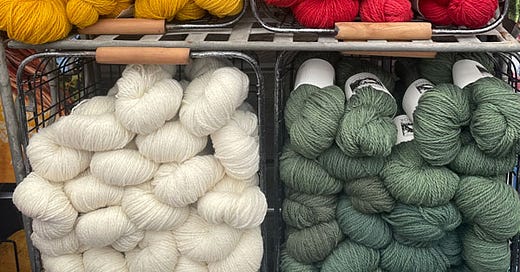


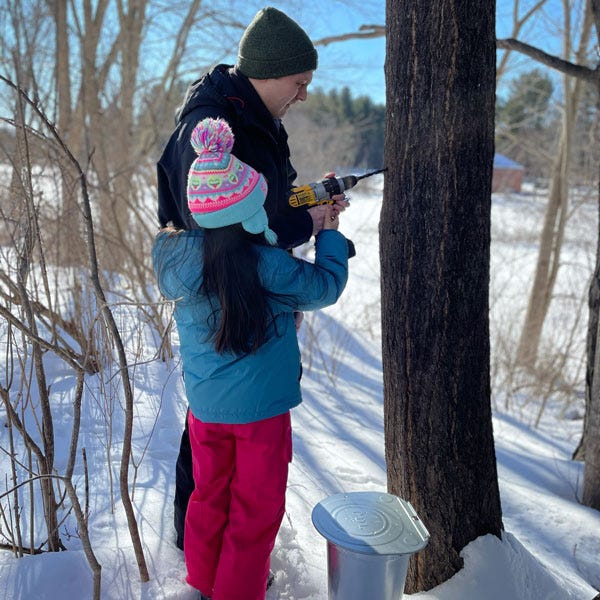


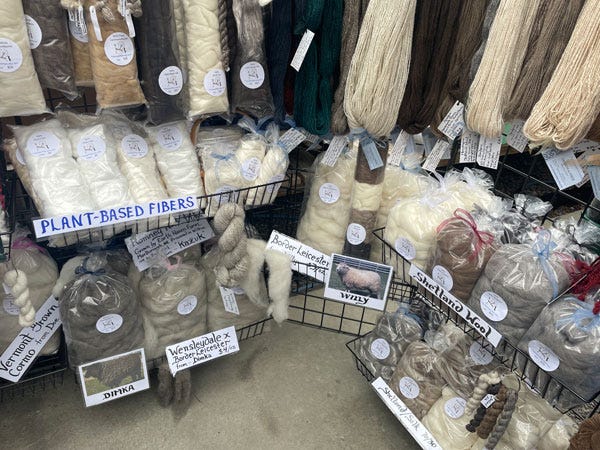

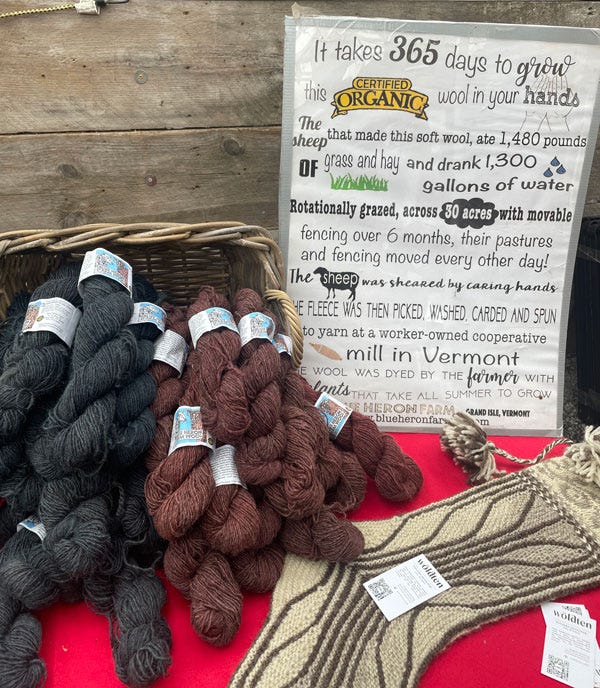
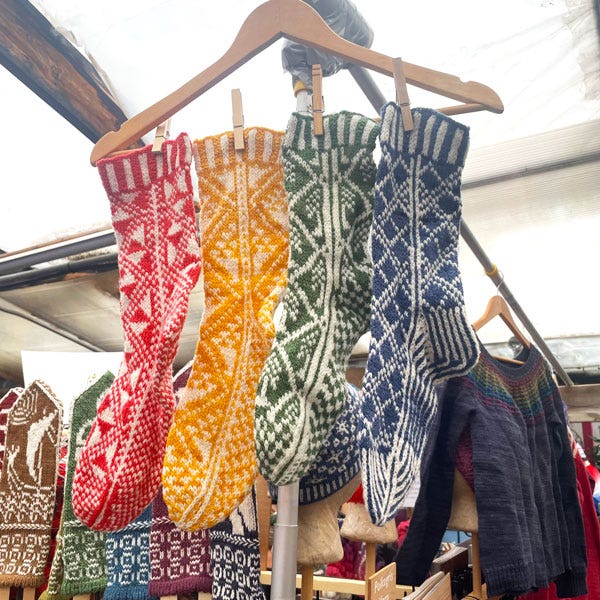

IMHO Anyone who knits or crochets are artists! I enjoyed reading about your adventures.